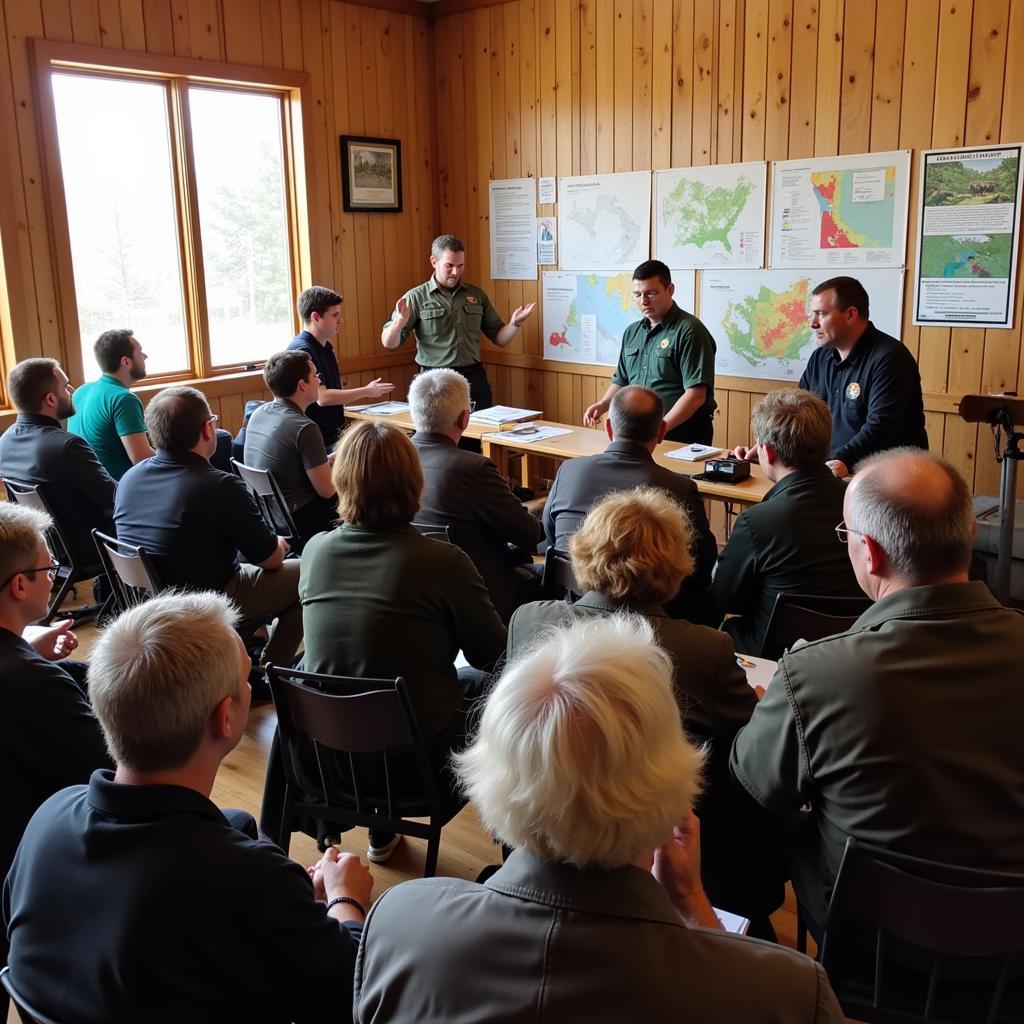Does the US Forestry Service Take Care of National Forests?
The US Forestry Service plays a vital role in managing and protecting our national forests. This article will delve into the responsibilities of the US Forestry Service, exploring their multifaceted approach to conservation, recreation, and resource management within these crucial ecosystems.
Understanding the US Forestry Service’s Role in National Forest Management
The US Forest Service, an agency within the US Department of Agriculture, is the primary steward of the nation’s 193 million acres of national forests and grasslands. Their mandate, as outlined in their mission statement, is to “sustain the health, diversity, and productivity of the Nation’s forests and grasslands to meet the needs of present and future generations.” This involves a complex balancing act of preserving natural resources while allowing for public access and use.
Key Responsibilities of the US Forestry Service
The US Forestry Service’s responsibilities extend across a wide spectrum of activities, including:
- Conservation and Ecosystem Management: Protecting biodiversity, endangered species, and watersheds. This involves managing wildlife populations, combating invasive species, and monitoring forest health.
- Recreation and Public Access: Providing opportunities for hiking, camping, fishing, and other recreational activities. This includes maintaining trails, campgrounds, and visitor centers.
- Resource Management: Overseeing the sustainable harvest of timber and other forest products. This requires careful planning and adherence to strict environmental guidelines.
- Fire Management: Preventing and suppressing wildfires, as well as using prescribed burns to maintain forest health and reduce fire risk.
- Research and Development: Conducting scientific research to improve forest management practices and understand the complex dynamics of forest ecosystems.
Who Owns National Forests, and How Does the USFS Fit In?
While the US Forestry Service manages national forests, the forests themselves are owned by the American public. This means that the agency acts as a trustee, responsible for managing these lands for the benefit of all citizens. This public ownership underscores the importance of balancing competing interests, such as resource extraction and recreation.
Public Input and the US Forestry Service
The US Forestry Service recognizes the importance of public participation in forest management decisions. They actively seek public input on forest plans and projects through public meetings, comment periods, and collaborative partnerships. This ensures that management decisions reflect the values and priorities of the communities that depend on national forests.
 Public Meeting Regarding National Forest Management
Public Meeting Regarding National Forest Management
Funding the US Forestry Service: Where Does the Money Come From?
The US Forestry Service receives its funding primarily through Congressional appropriations. This funding is allocated to support various programs and activities, including forest management, fire suppression, and research. Additional revenue is generated through timber sales, grazing permits, and recreational fees.
The Challenges of Funding National Forest Management
Funding for the US Forestry Service has faced increasing challenges in recent years. Factors such as increasing wildfire suppression costs and declining timber revenues have strained the agency’s budget, impacting its ability to effectively manage and protect national forests.
Does the US Forestry Service Manage All Forests in the US?
No, the US Forestry Service does not manage all forests in the US. While they manage national forests, other federal agencies, such as the National Park Service and the Bureau of Land Management, manage other types of public lands. State and local governments also manage forests, as do private landowners.
Conclusion: The Future of National Forests and the US Forestry Service
The US Forestry Service plays a crucial role in the management and protection of our national forests. As we face challenges such as climate change and increasing demands on our natural resources, the role of the US Forestry Service in ensuring the health and sustainability of these vital ecosystems becomes even more critical. Does The Us Forestry Service Take Care Of National Forests? Absolutely. Their dedicated work ensures that these national treasures will continue to provide benefits for generations to come.
FAQ
-
Can I hunt in a National Forest? Hunting is generally permitted in national forests, but regulations vary depending on the specific forest and state. Check with the local US Forestry Service office for specific rules and regulations.
-
Do I need a permit to camp in a National Forest? Permits are often required for camping in developed campgrounds within national forests. Dispersed camping may also require permits or have specific regulations.
-
Can I cut down trees in a National Forest? Cutting down trees in a national forest is generally prohibited without a permit. Permits are typically issued for specific purposes, such as fuelwood gathering or timber harvesting.
-
How can I get involved in supporting my local National Forest? There are many ways to get involved, including volunteering, participating in public meetings, and supporting organizations that work to protect national forests.
-
What should I do if I see a wildfire in a National Forest? Immediately report any wildfires to the local authorities. Do not attempt to fight the fire yourself.
-
Where can I find more information about a specific National Forest? The US Forestry Service website provides detailed information about each national forest, including maps, regulations, and recreational opportunities.
-
How can I contact the US Forestry Service? You can contact the US Forestry Service through their website or by contacting your local forest office.
For further assistance, please contact us via WhatsApp: +1(641)206-8880, Email: [email protected], or visit us at 456 Oak Avenue, Miami, FL 33101, USA. Our customer service team is available 24/7.

